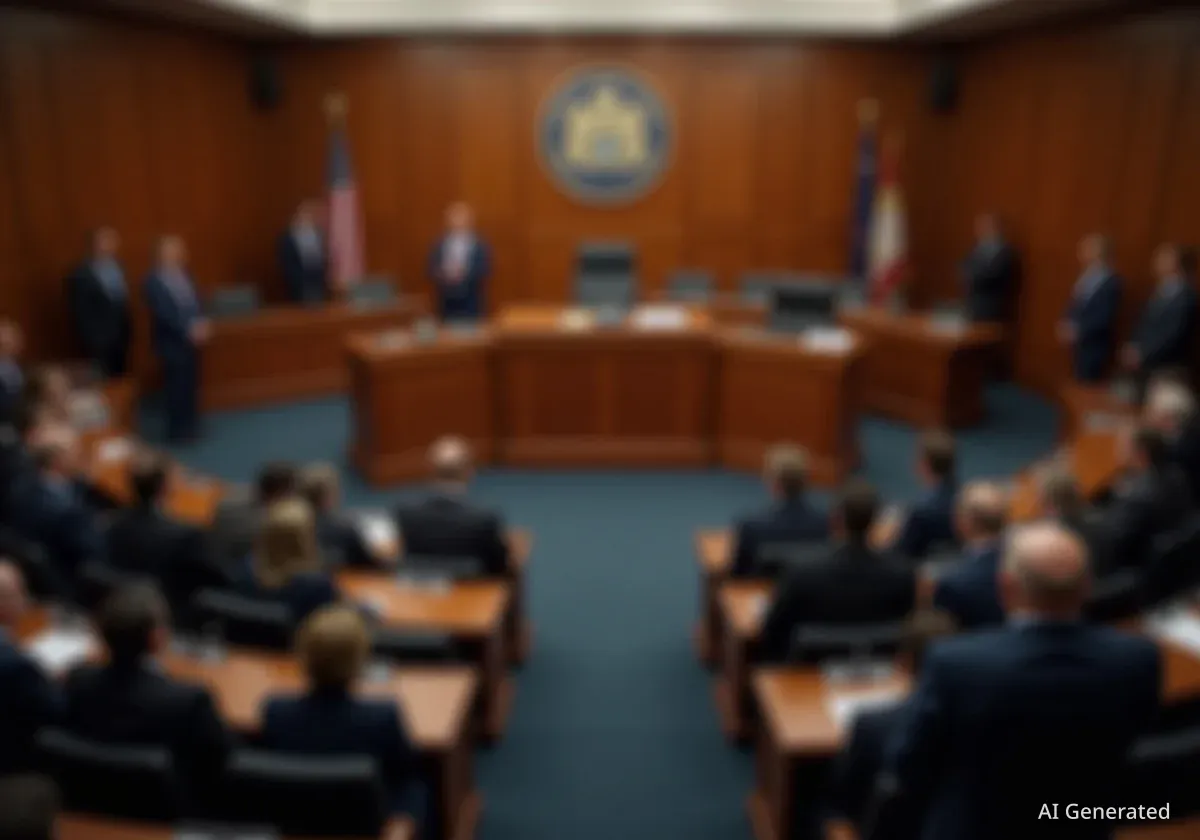Austin's recent rebranding effort, which included the unveiling of a new city logo, has sparked considerable public debate. The project, costing $1.1 million, aimed to modernize the city's visual identity. However, the new design has faced widespread criticism, leading to an unofficial competition where thousands of designers submitted alternative concepts.
This public reaction highlights a common challenge in civic rebranding: balancing professional design with community expectations. The new logo's reception underscores the importance of public engagement in such initiatives, especially when significant public funds are involved.
Key Takeaways
- Austin's new city logo, part of a $1.1 million rebranding, has generated significant public criticism.
- An unofficial competition on Freelancer.com received thousands of alternative logo designs.
- The city's previous official logo and the new design are central to the public discussion.
- Community input is being sought for future discussions on what a city logo should represent.
The Official Rebranding Initiative
The city of Austin commissioned the new logo as part of a broader rebranding strategy. The goal was to create a contemporary visual identity that accurately reflects Austin's culture and future aspirations. The total cost associated with this comprehensive rebranding campaign reached $1.1 million.
This investment covered various aspects, including research, design consultation, and implementation across city departments and public-facing materials. City officials stated that the new logo was intended to be versatile and representative of Austin's diverse character.
Public Reception and Initial Reactions
Upon its unveiling, the new logo quickly became a topic of discussion across social media platforms and local news outlets. Many residents expressed dissatisfaction with the design, questioning its aesthetic appeal and its ability to capture the essence of Austin.
The timing of the logo's release also drew criticism. This occurred alongside the Austin City Council's adoption of a $6 billion budget and calls for a tax-rate election. Some residents linked the significant expenditure on the logo to broader concerns about city spending priorities.
"The internet reacted quickly, with many questioning the design and the financial investment during a critical budget period for the city," reported one local news outlet.
Fact Check: Logo Costs
The $1.1 million rebranding campaign for Austin included not just the logo design but also extensive brand guidelines, digital assets, and implementation strategies for various city departments. This figure covers a comprehensive overhaul of the city's visual communication.
The Unofficial Design Competition
In response to the public's lukewarm reception, Freelancer.com, an online platform connecting clients with freelance professionals, launched an unofficial competition. This initiative invited designers worldwide to create alternative logos for Austin.
The competition quickly gained traction, attracting thousands of submissions from designers eager to offer their interpretations of Austin's identity. This surge in participation demonstrated a strong public interest in the city's visual representation and a desire for more creative input.
Showcasing Alternative Designs
Freelancer.com's judges evaluated the numerous entries and selected their favorite design, along with six other finalists. These alternative logos offered diverse artistic approaches, ranging from abstract concepts to designs incorporating well-known Austin landmarks and cultural symbols.
The publication of these designs provided a comparative view against both Austin's old official logo and the recently introduced new one. This allowed the public to engage in a direct comparison of different design philosophies and their potential impact.
Background: Civic Rebranding Trends
Many cities undertake rebranding efforts to boost tourism, attract businesses, and foster civic pride. These projects often involve creating new logos, slogans, and visual guidelines. Successful rebrands typically involve extensive community consultation and transparency regarding costs and objectives. However, public backlash can occur if residents feel excluded from the process or if the new identity does not resonate with their perception of the city.
Comparing Old and New Logos
Austin's previous official logo had been in use for a considerable period. It featured elements that many residents had become familiar with over time. The new logo represented a departure from this established visual identity, aiming for a more contemporary and streamlined look.
The comparison between the old, new, and unofficial designs sparked discussions about what aspects a city logo should emphasize. Should it be modern and abstract, or should it incorporate more literal representations of the city's character, such as music, nature, or technology?
- Old Logo: Often described as traditional, featuring established city symbols.
- New Logo: Aimed for modern simplicity, but criticized for being generic.
- Unofficial Designs: Varied widely, showcasing community desire for unique and representative symbols.
Community Engagement and Future Input
While the city has adopted its new logo, the public discourse continues. The Austin American-Statesman's Opinion section has invited residents to submit letters to the editor, sharing their views on what a logo should convey about Austin. This initiative seeks to capture community sentiment and provide a platform for further discussion.
According to the Austin American-Statesman, selected responses will be published in an upcoming package. This ongoing engagement suggests that while the official decision has been made, the conversation about Austin's visual identity remains active and important to its residents.
The city's experience serves as a case study for urban planners and design professionals. It underlines the need for extensive public consultation and clear communication when undertaking large-scale civic projects, especially those involving significant financial investment and public identity.
The debate surrounding Austin's logo emphasizes that a city's brand is not just a graphic design. It is a reflection of its history, culture, and the aspirations of its people. Ensuring that a new logo resonates with the community is crucial for its long-term acceptance and effectiveness.




